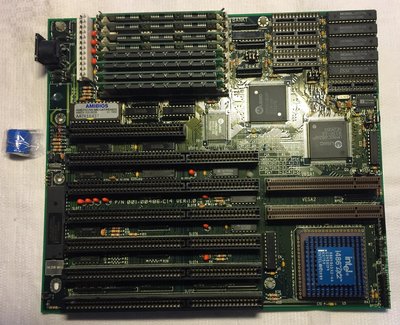First post, by c0keb0ttle
I have a nice 486 motherboard I'm using, a Chicony CH-486-33/50P of some revision, and it works great except for one thing: The clock does not seem to be functional. I'm using an external battery and it saves BIOS info and the set time/date just fine, but the time won't advance when the computer is turned off. It still shows the date and time from November 2016 when I last set it.
Anyone know if this can be fixed? There is no obvious Dallas RTC chip to exchange...
